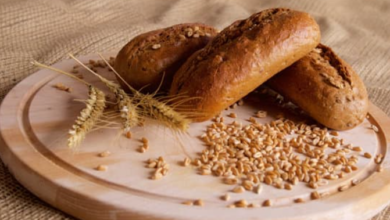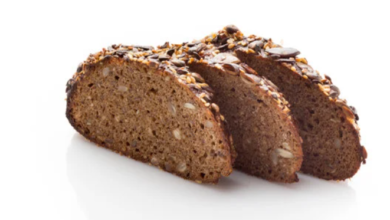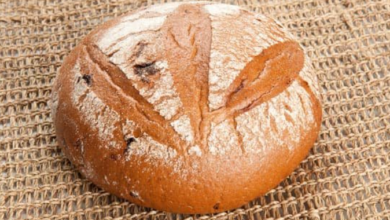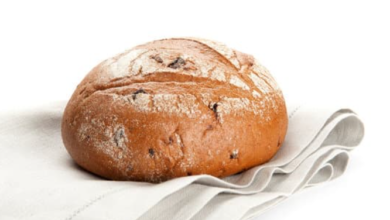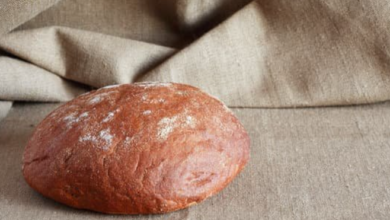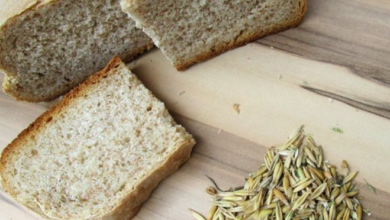What makes rye bread different? It’s not what you might think!

What To Know
- Dark rye flour, made from the whole rye grain, produces a bread with a robust, earthy flavor and a darker crumb.
- Light rye flour, on the other hand, is made from the endosperm of the rye grain and results in a bread with a milder flavor and a lighter crumb.
- Pumpernickel bread is a type of rye bread that is made with coarsely ground rye flour and fermented for a longer period of time.
The world of bread is a vast and diverse tapestry, with each variety boasting its own unique characteristics and flavors. Among this culinary symphony, rye bread stands out as a captivating composition, offering a distinctive taste and texture that sets it apart from its wheat-based counterparts. In this comprehensive guide, we will delve into the intriguing realm of rye bread, exploring what makes it a captivating culinary experience.
The Rye Grain
The foundation of rye bread lies in the rye grain, a member of the grass family known as Poaceae. Unlike wheat, which is a relatively soft grain, rye is characterized by its toughness and low gluten content. This unique composition contributes significantly to the distinct properties of rye bread.
Fermentation Process
The fermentation process plays a crucial role in shaping the flavor and texture of rye bread. During fermentation, yeast consumes the sugars present in the rye flour, releasing carbon dioxide and alcohol as byproducts. The carbon dioxide creates air pockets within the dough, resulting in a lighter and airier texture. The alcohol, on the other hand, imparts a slightly sour flavor to the bread.
Sourdough Starter
Traditionally, rye bread is made using a sourdough starter. A sourdough starter is a fermented mixture of rye flour and water that contains wild yeast and bacteria. These microorganisms feed on the carbohydrates in the flour, producing lactic acid and acetic acid, which contribute to the characteristic tanginess and acidity of rye bread.
Flour Type
The type of rye flour used also influences the taste and texture of the bread. Dark rye flour, made from the whole rye grain, produces a bread with a robust, earthy flavor and a darker crumb. Light rye flour, on the other hand, is made from the endosperm of the rye grain and results in a bread with a milder flavor and a lighter crumb.
Kneading Technique
The kneading technique can also impact the final texture of rye bread. Due to its low gluten content, rye dough requires a gentler kneading process compared to wheat dough. Over-kneading can result in a tough and dense bread.
Baking Time and Temperature
The baking time and temperature are crucial factors in determining the crust and crumb of rye bread. Rye bread typically requires a longer baking time than wheat bread, allowing the moisture to evaporate and the crust to develop a crispy texture. The optimal baking temperature for rye bread is between 450-475°F (230-245°C).
Nutritional Value
Rye bread is not only a culinary delight but also a nutritional powerhouse. It is a good source of dietary fiber, which promotes satiety and supports digestive health. Rye bread is also rich in vitamins and minerals, including B vitamins, iron, and magnesium.
Culinary Versatility
The versatility of rye bread extends beyond its nutritional value. It can be enjoyed on its own or paired with a variety of toppings and fillings. Rye bread is a perfect accompaniment to soups, salads, and sandwiches. It can also be used to make croutons, breadcrumbs, and stuffing.
Summary: The Allure of Rye Bread
In the tapestry of bread, rye bread stands as a testament to the transformative power of grain and fermentation. Its distinct flavor, texture, and nutritional value have captivated palates for centuries. Whether enjoyed as a simple slice or incorporated into culinary creations, rye bread continues to enchant and delight bread enthusiasts around the world.
Top Questions Asked
1. What is the difference between rye bread and pumpernickel bread?
Pumpernickel bread is a type of rye bread that is made with coarsely ground rye flour and fermented for a longer period of time. This results in a bread with a darker color, a denser texture, and a more intense sour flavor.
2. Can rye bread be made without sourdough?
Yes, it is possible to make rye bread without sourdough. However, using a sourdough starter adds depth of flavor and complexity to the bread.
3. Is rye bread healthier than white bread?
Yes, rye bread is generally considered to be healthier than white bread. It is a good source of dietary fiber, vitamins, and minerals.
4. How long does rye bread last?
Rye bread typically lasts for 3-5 days at room temperature. It can be stored in the refrigerator for up to a week or in the freezer for up to 3 months.
5. What are some popular toppings for rye bread?
Popular toppings for rye bread include butter, cream cheese, smoked salmon, avocado, and cheese.
